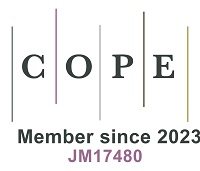REFERENCES
1. Du, L.; Li, X.; Zhao, H.; Ma, W.; Jiang, P. System dynamic modeling of urban carbon emissions based on the regional National Economy and Social Development Plan: a case study of Shanghai city. J. Clean. Prod. 2018, 172, 1501-13.
2. Gu, S.; Fu, B.; Thriveni, T.; Fujita, T.; Ahn, J. W. Coupled LMDI and system dynamics model for estimating urban CO2 emission mitigation potential in Shanghai, China. J. Clean. Prod. 2019, 240, 118034.
3. Dhakal, S. GHG emissions from urbanization and opportunities for urban carbon mitigation. Curr. Opin. Environ. Sustain. 2010, 2, 277-83.
4. Intergovernmental Panel on Climate Change (IPCC). Urban Systems and other settlements. In: Climate Change 2022 - Mitigation of Climate Change. Cambridge University Press; 2023. pp. 861-952.
5. National Development and Reform Commission (NDRC). Working guidance for carbon dioxide peaking and carbon neutrality in full and faithful implementation of the new development philosophy; 2021. Available from: https://en.ndrc.gov.cn/policies/202110/t20211024_1300725.html [Last accessed on 28 Oct 2025].
6. Wang, C.; Xu, L.; Zheng, X.; Hua, Y.; He, T.; Xue, X. Carbon emission estimation at the urban functional zone scale: integrating multi-source data and machine learning approach. 2024.
7. Säynäjoki, E.; Inkeri, V.; Heinonen, J.; Junnila, S. How central business district developments facilitate environmental sustainability - A multiple case study in Finland. Cities 2014, 41, 101-13.
8. Intergovernmental Panel on Climate Change. Chapter 12 - Human settlements, infrastructure, and spatial planning. In: Climate Change 2014: Mitigation of Climate Change. Cambridge University Press; 2015. pp. 923-1000.
9. Creutzig, F.; Agoston, P.; Minx, J. C.; et al. Urban infrastructure choices structure climate solutions. Nat. Clim. Chang. 2016, 6, 1054-6.
10. Kennedy, C.; Steinberger, J.; Gasson, B.; et al. Greenhouse gas emissions from global cities. Environ. Sci. Technol. 2009, 43, 7297-302.
11. Ramaswami, A.; Hillman, T.; Janson, B.; Reiner, M.; Thomas, G. A demand-centered, hybrid life-cycle methodology for city-scale greenhouse gas inventories. Environ. Sci. Technol. 2008, 42, 6455-61.
12. Xu, D.; Zhang, Y.; Li, D.; Han, H.; Wang, R.; Wang, T. Low-carbon evaluation system for Central Business Districts in China. Jones Lang LaSalle Report. 2023. Available from: https://app.jingsocial.com/microFrontend/leadGeneration/jsf-leads/list/contentMarketing/RHijixWnvs8XToQsoUH4Ce/xPs2r5moArqP9DZoqYNgoG [Last accessed on 31 Oct 2025].
13. Hong, T.; Lee, S. H.; Zhang, W.; Sun, K.; Hooper, B.; Kim, J. Nexus of electrification and energy efficiency retrofit of commercial buildings at the district scale. Sustain. Cities. Soc. 2023, 95, 104608.
14. Yin, L.; Sharifi, A.; Liqiao, H.; Jinyu, C. Urban carbon accounting: an overview. Urban. Clim. 2022, 44, 101195.
15. Thio, E.; Tan, M.; Li, L.; et al. The estimation of influencing factors for carbon emissions based on EKC hypothesis and STIRPAT model: evidence from top 10 countries. Environ. Dev. Sustain. 2022, 24, 11226-59.
16. Zhang, N.; Yu, K.; Chen, Z. How does urbanization affect carbon dioxide emissions? A cross-country panel data analysis. Energy. Policy. 2017, 107, 678-87.
17. Hung, C. C.; Hsu, S.; Cheng, K. Quantifying city-scale carbon emissions of the construction sector based on multi-regional input-output analysis. Resour. Conserv. Recy. 2019, 149, 75-85.
18. Chen, Q.; Su, M.; Meng, F.; et al. Analysis of urban carbon metabolism characteristics based on provincial input-output tables. J. Environ. Manag. 2020, 265, 110561.
19. Wiedmann, T. C.; Wilting, H.; Lenzen, M.; Lutter, S.; Palm, V. Quo Vadis MRIO? Methodological, data and institutional requirements for multi-region input-output analysis. Ecol. Econ. 2011, 70, 1937-45.
20. Fu, Z.; Zhang, Y.; He, S.; Wang, H.; Jiang, X.; Wang, S. Multi-objective programming for economy-energy-environment system and policy mix with dual constraints of carbon emission and water consumption based on multi-scenario analysis. Energy. Rep. 2022, 8, 7884-91.
21. Li, G.; Zhou, H.; Kang, J.; Shen, N.; Zhong, H.; Xu, S. Optimising urban office block morphologies with photovoltaic system integration: an energy-environment-economic evaluation under climate change scenarios. Energy. Build. 2025, 330, 115318.
22. Guan, D.; Peters, G. P.; Weber, C. L.; Hubacek, K. Journey to world top emitter: an analysis of the driving forces of China's recent CO2 emissions surge. Geophys. Res. Lett. 2009, 36, 2008GL036540.
23. Davis, S. J.; Caldeira, K. Consumption-based accounting of CO2 emissions. Proc. Natl. Acad. Sci. USA. 2010, 107, 5687-92.
24. Grubler, A.; Wilson, C.; Bento, N.; et al. A low energy demand scenario for meeting the 1.5 °C target and sustainable development goals without negative emission technologies. Nat. Energy. 2018, 3, 515-27.
25. Lou, Y.; Ye, Y.; Yang, Y.; Zuo, W. Long-term carbon emission reduction potential of building retrofits with dynamically changing electricity emission factors. Build. Environ. 2022, 210, 108683.
26. Xiong, L.; Wang, M.; Mao, J.; Huang, B. A review of building carbon emission accounting methods under low-carbon building background. Buildings 2024, 14, 777.
27. ürge-Vorsatz, D.; Danny, Harvey. L. D.; Mirasgedis, S.; Levine, M. D. Mitigating CO2 emissions from energy use in the world's buildings. Build. Res. Inf. 2007, 35, 379-98.
28. Guerrieri, M.; La, Gennusa. M.; Peri, G.; Rizzo, G.; Scaccianoce, G. University campuses as small-scale models of cities: quantitative assessment of a low carbon transition path. Renew. Sustain. Energy. Rev. 2019, 113, 109263.
29. Tan, X.; Tu, T.; Gu, B.; Zeng, Y. Scenario simulation of CO2 emissions from light-duty passenger vehicles under land use-transport planning: a case of Shenzhen International Low Carbon City. Sustain. Cities. Soc. 2021, 75, 103266.
30. Zhang, Y.; Cao, Y.; Chen, T.; Lucchi, E. Optimized community-level distributed photovoltaic generation (DPVG): aesthetic, technical, economic, and environmental assessment of building integrated photovoltaic (BIPV) systems. J. Build. Eng. 2025, 103, 112085.
31. Wu, W.; Chou, S.; Viswanathan, K. Optimal dispatching of smart hybrid energy systems for addressing a low-carbon community. Energies 2023, 16, 3698.
32. Zhang, Z.; Mu, X.; Tu, C.; Sun, Z.; Hu, G. Hierarchical network planning of distributed renewable energy in a net-zero energy community. Clean. Technol. Environ. Policy. 2023, 25, 1643-58.
33. Valencia, A.; Hossain, M. U.; Chang, N. Building energy retrofit simulation for exploring decarbonization pathways in a community-scale food-energy-water-waste nexus. Sustain. Cities. Soc. 2022, 87, 104173.
34. Feng, Y.; Fang, C.; Jia, X.; et al. Dual pathways of carbon neutrality in urban green spaces: assessment and regulatory strategies. Sustain. Cities. Soc. 2025, 125, 106311.
35. Yang, B.; Lee, D. Urban Green space arrangement for an optimal landscape planning strategy for runoff reduction. Land 2021, 10, 897.
36. Chhipi-shrestha, G.; Hewage, K.; Sadiq, R. Impacts of neighborhood densification on water-energy-carbon nexus: Investigating water distribution and residential landscaping system. J. Clean. Prod. 2017, 156, 786-95.
37. Newman, P. W. Sustainability and cities: extending the metabolism model. Lands. Urban. Plan. 1999, 44, 219-26.
38. Zhou, Y.; Fang, W.; Li, M.; Liu, W. Exploring the impacts of a low-carbon policy instrument: a case of carbon tax on transportation in China. Resour. Conserv. Recy. 2018, 139, 307-14.
39. Nowak, D. J.; Crane, D. E. Carbon storage and sequestration by urban trees in the USA. Environ. Pollut. 2002, 116, 381-9.
40. Sorrell, S. Jevons’ Paradox revisited: The evidence for backfire from improved energy efficiency. Energy. Policy. 2009, 37, 1456-69.
41. Rivera-Marín, A.; Alfonso-Solar, D.; Vargas-Salgado, C.; Català-Mortes, S. Methodology for estimating the decarbonization potential at the neighborhood level in an urban area: application to La Carrasca in Valencia city - Spain. J. Clean. Prod. 2023, 417, 138087.
42. Pulselli, R. M.; Marchi, M.; Neri, E.; Marchettini, N.; Bastianoni, S. Carbon accounting framework for decarbonisation of European city neighbourhoods. J. Clean. Prod. 2019, 208, 850-68.
43. Thebuwena, A. C. H. J.; Samarakoon, S. M. S. M. K.; Ratnayake, R. M. C. Optimization of energy consumption in vertical mobility systems of high-rise office buildings: a case study from a developing economy. Energy. Efficiency. 2024, 17, 10246.
44. Farizal, F.; Noviandri, M. A.; Hamdani, H. Sustainability development through a nearly zero energy building implementation case: an office building in South Jakarta. Sustainability 2024, 16, 7027.
45. Noor, M. A.; Ashrafi, S.; Fattah, M. A.; Morshed, S. R.; Rahman, S. Assessment of traffic congestion scenario at the CBD areas in a developing city: In the context of Khulna City, Bangladesh. Transp. Res. Interdiscip. Perspect. 2021, 11, 100435.
46. Shiftan, Y.; Kaplan, S.; Hakkert, S. Scenario building as a tool for planning a sustainable transportation system. Trans. Res. Part. D. 2003, 8, 323-42.
47. C40 Cities. Climate action planning framework; 2018. Available from: https://www.c40knowledgehub.org/s/article/Climate-Action-Planning-Framework?language=en_US [Last accessed on 28 Oct 2025].
48. Bai, X.; Dawson, R. J.; Ürge-Vorsatz, D.; et al. Six research priorities for cities and climate change. Nature 2018, 555, 23-5.
49. Ma, X.; Yang, J.; Sun, D.; Zhang, R.; Xiao, X.; Xia, J. Fine allocation of sectoral carbon emissions at block scale and contribution of functional zones. Ecol. Inf. 2023, 78, 102293.
50. Zhang, Y.; Guo, R.; Peng, K.; et al. Carbon-neutrality-transformation pathway in ecoregions: an empirical study of Chongming district, Shanghai, China. Water. Energy. Nexus. 2024, 7, 200-12.
51. Goodchild, M. F.; Lam, N. S. N. Areal interpolation: a variant of the traditional spatial problem. Geo-Processing 1980, 1, 297-312. Available from: https://asu.elsevierpure.com/en/publications/areal-interpolation-a-variant-of-the-traditional-spatial-problem/?utm_source=chatgpt.com [Last accessed on 31 Oct 2025].
53. National Information Center of China. Mid- and long-term goals, strategies and pathways for China's economic and social development. 2020. Available from: https://www.efchina.org/Attachments/Report/report-lceg-20210207-4/%E4%B8%AD%E5%9B%BD%E7%BB%8F%E6%B5%8E%E7%A4%BE%E4%BC%9A%E5%8F%91%E5%B1%95%E7%9A%84%E4%B8%AD%E9%95%BF%E6%9C%9F%E7%9B%AE%E6%A0%87-%E6%88%98%E7%95%A5%E4%B8%8E%E8%B7%AF%E5%BE%84.pdf [Last accessed on 31 Oct 2025].
54. Sun, J. Methodology of integrated planning toward urban block-level carbon reduction. Urban. Plan. Forum. 2022, 6, 102-109.
55. Kong, X.; Wang, Z.; Liu, C.; Zhang, D.; Gao, H. Refined peak shaving potential assessment and differentiated decision-making method for user load in virtual power plants. Appl. Energy. 2023, 334, 120609.
56. Pimm, A. J.; Palczewski, J.; Barbour, E. R.; Cockerill, T. T. Using electricity storage to reduce greenhouse gas emissions. Appl. Energy. 2021, 282, 116199.








